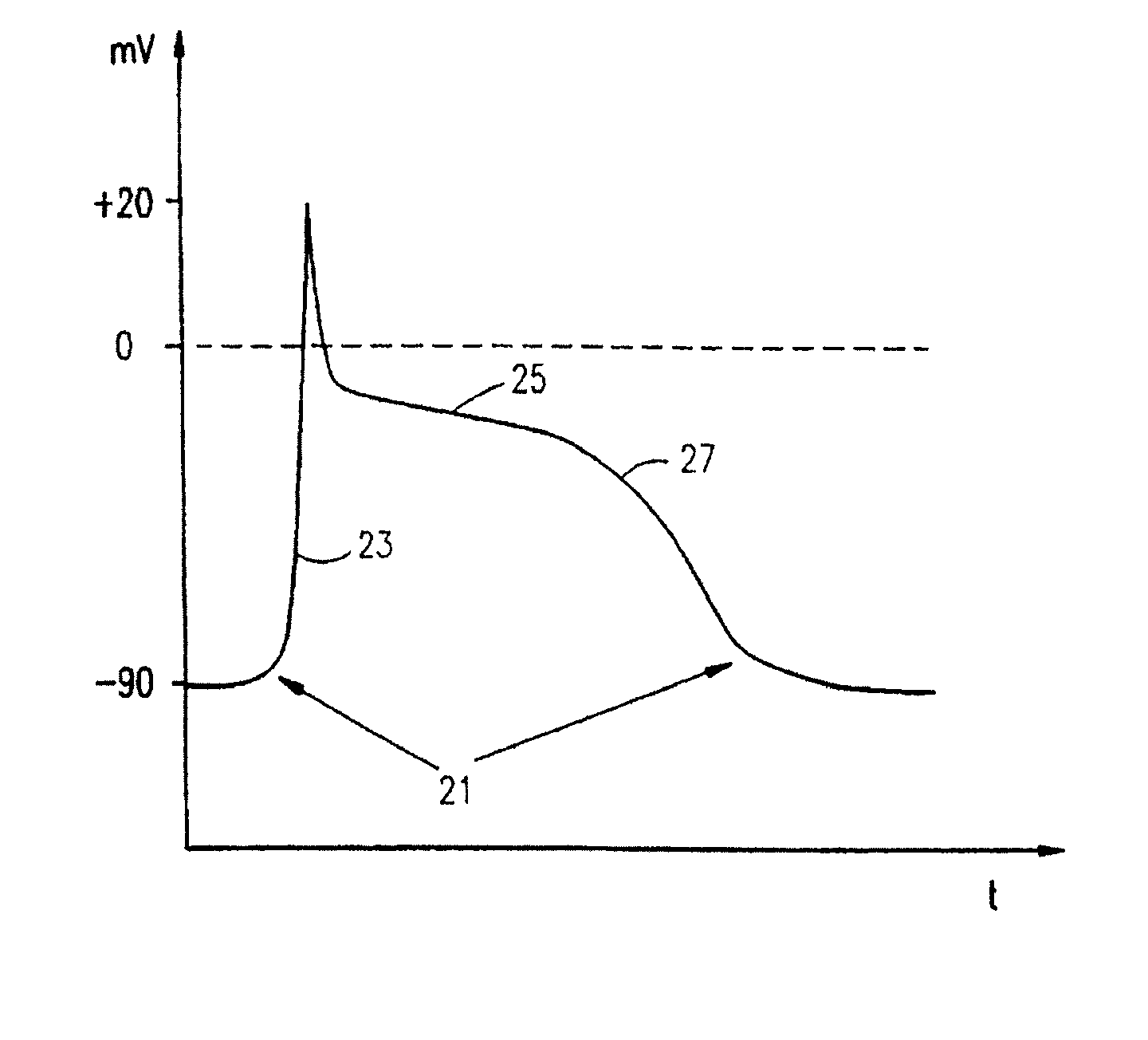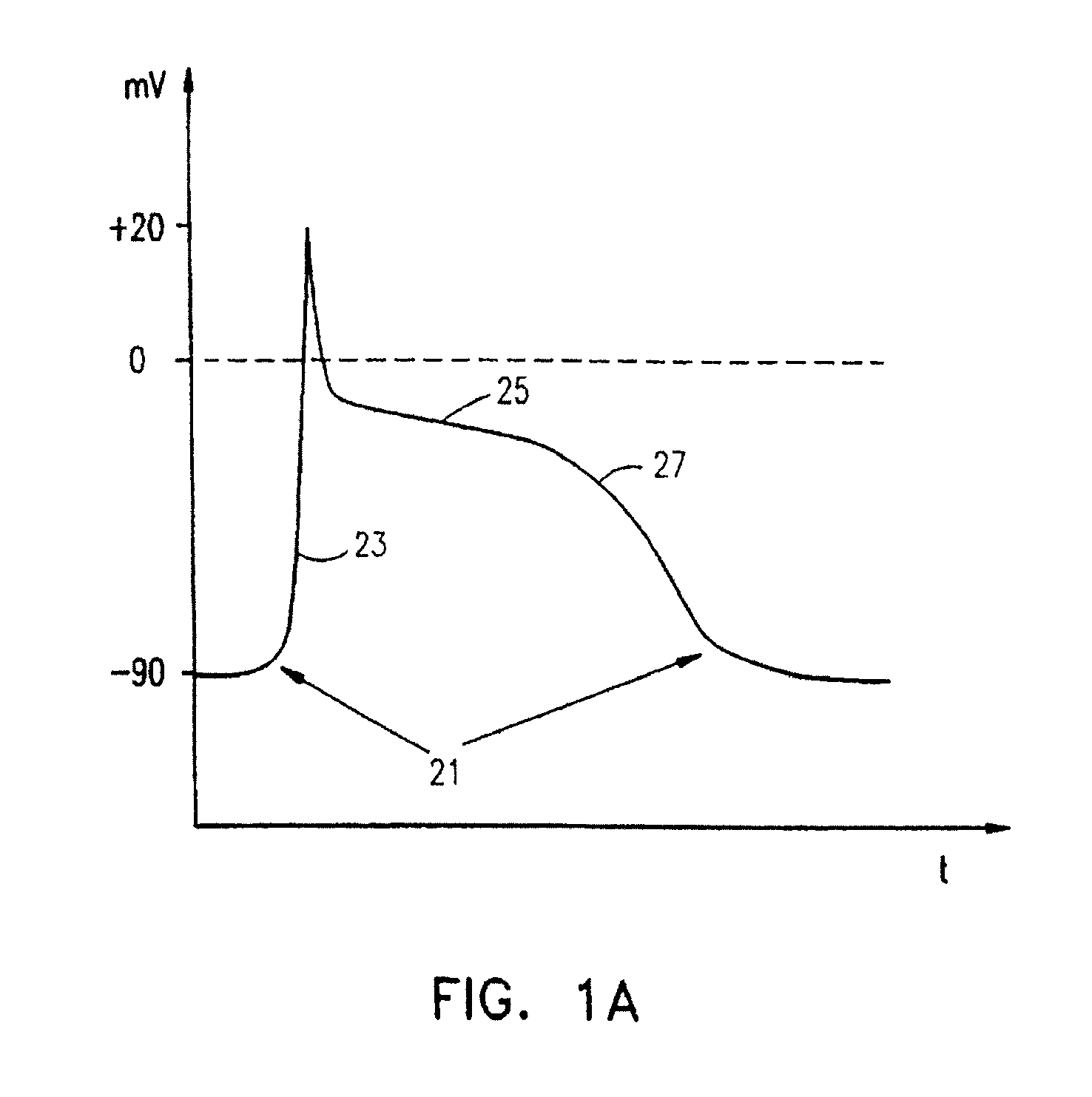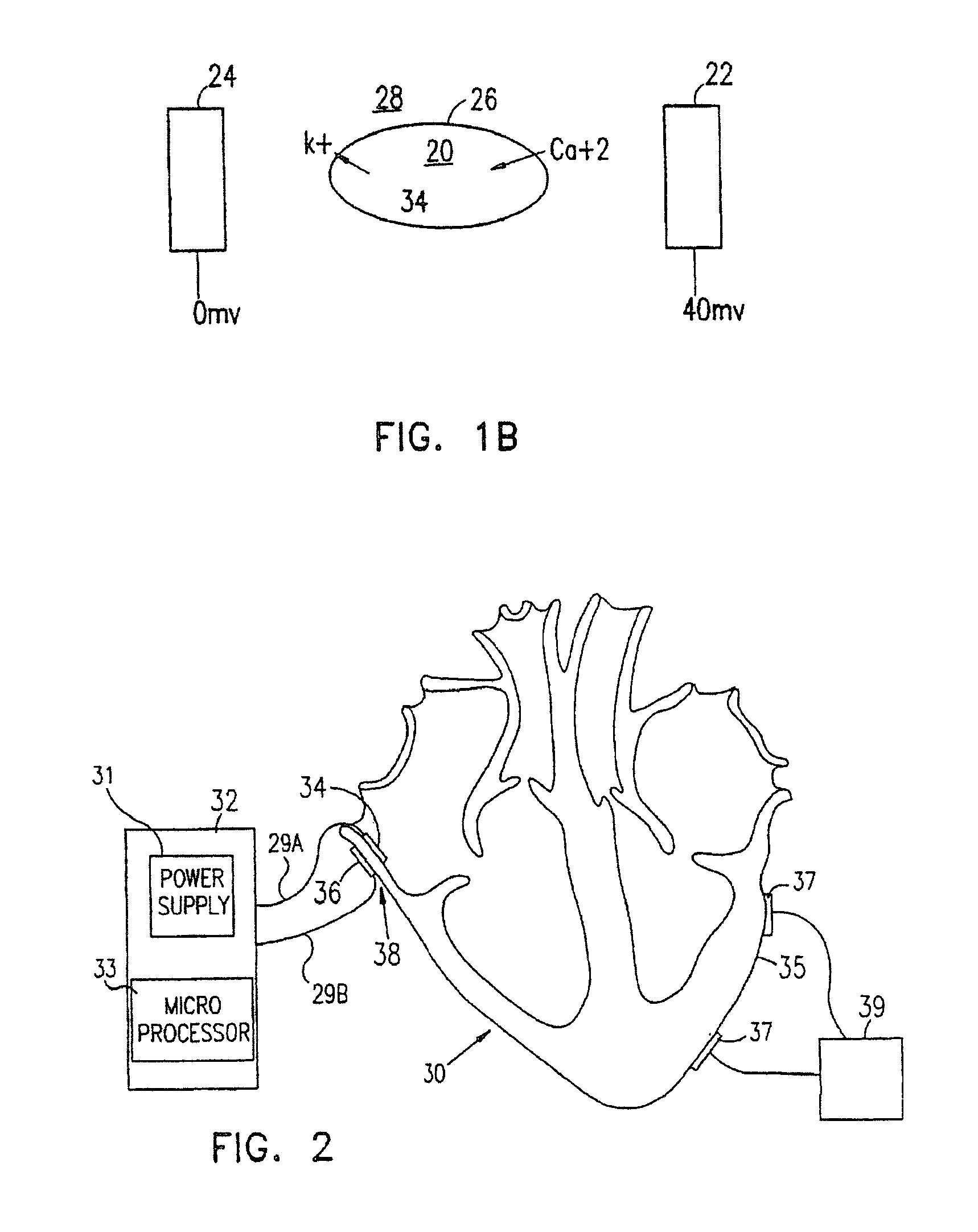Electrical muscle controller
a technology of electrical muscle and controller, applied in electrotherapy, heart stimulators, therapy, etc., can solve the problem that the signal cannot sufficiently depolarize the cellular membrane, and achieve the effect of reducing the sensitivity of the portion and reducing the reactivity of the portion
- Summary
- Abstract
- Description
- Claims
- Application Information
AI Technical Summary
Benefits of technology
Problems solved by technology
Method used
Image
Examples
Embodiment Construction
[0417]One aspect of the present invention relates to controlling and / or modulating the contractility of a cardiac muscle segment and / or the plateau duration of an action potential of the cardiac muscle segment, by applying an electric field or current across the segment. As used herein, the terms, voltage, electric field and current are used interchangeably to refer to the act of supplying a non-excitatory signal to control cardiac activity. The actual method of applying the signal is described in more detail below.
[0418]FIG. 1B shows a schematic model illustrating one possible explanation for the relation between an applied voltage and a resulting plateau duration. A cell 20, having a membrane 26, surrounded by extra-cellular fluid 28, is located in an electrical field generated by an electrode 22 and an electrode 24. Cell 20 has a −40 mV internal potential across membrane 26, electrode 22 has a potential of 40 mV and electrode 24 is grounded (to the rest of the body). During the a...
PUM
 Login to View More
Login to View More Abstract
Description
Claims
Application Information
 Login to View More
Login to View More - R&D
- Intellectual Property
- Life Sciences
- Materials
- Tech Scout
- Unparalleled Data Quality
- Higher Quality Content
- 60% Fewer Hallucinations
Browse by: Latest US Patents, China's latest patents, Technical Efficacy Thesaurus, Application Domain, Technology Topic, Popular Technical Reports.
© 2025 PatSnap. All rights reserved.Legal|Privacy policy|Modern Slavery Act Transparency Statement|Sitemap|About US| Contact US: help@patsnap.com



